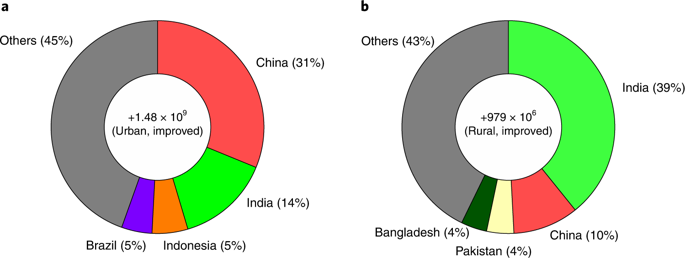「ミレニアム開発目標(MDGs)」の飲料水ターゲットはいかに達成されたのか
How global targets on drinking water were developed and achieved
2019年4月15日 Nature Sustainability 2 : 4 doi: 10.1038/s41893-019-0269-3

「ミレニアム開発目標(MDGs)」は2015年の達成期限を過ぎ、「持続可能な開発目標(SDGs)」が後継となっている。MDGsのターゲットの1つに、「安全な飲料水を持続的に利用できない人々の割合を半減させる」があった。これは、飲料水に関する国際合意を得た世界目標の長い歴史において、初めて達成されたターゲットである。しかし、「改善された水源」という単純化された評価指標が用いられたため、「安全な」飲料水に関するMDGsのターゲットが本当に達成されたという間違った結論につながる可能性が指摘される。本論文では、MDGsのターゲットの達成には中国とインドの貢献が大きかったことに加えて、その二か国を含むほとんどの国において、1990~2015年での改善された水源にアクセスできる人口割合の増加と経済発展が密接に関係していることを示した。すべての人が安全で安価な飲料水を得られることを目指す現在のSDGsのターゲット6.1においても、同様の飲料水へのアクセスと経済発展の相乗効果が、ほとんどの国に当てはまることが期待される。
Corresponding Author
Millennium Development Goals (MDGs) have passed their target year of 2015 and are followed by Sustainable Development Goals (SDGs). One of the MDG targets was halving the population without sustainable access to safe drinking water. It was the first target achieved in the long history of internationally agreed global targets on drinking water. However, a simplified monitoring indicator could have led to the mistaken conclusion that the MDG target on ‘safe’ drinking water had actually been achieved. We show that the major contributors to the achievement of the MDG target were China and India and that the increase in the percentage of population with access to improved sources was closely associated with economic development in most nations during 1990–2015. We expect that a synergetic relationship between drinking water access and economic development will be consistently true for most nations in the current SDG Target 6.1, which aims to secure safe and affordable drinking water for all.

